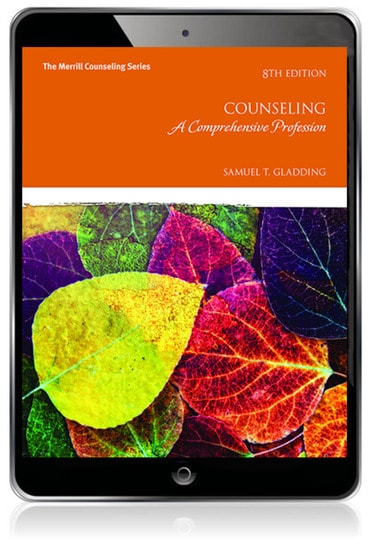Switch content of the page by the Role togglethe content would be changed according to the role

Counseling: A Comprehensive Profession, 8th edition
Published by Pearson (September 18, 2020) © 2018
- Samuel T. Gladding Wake Forest University
Pearson+ subscription
per month
-month term,ISBN-13: 9780136874720
Counseling: A Comprehensive Profession
Published 2020
Paperback
$138.66
Price Reduced From: $173.32
ISBN-13: 9780134460604
Counseling: A Comprehensive Profession
Published 2017
12-month access
ISBN-13: 9780134245805
MyLab Counseling with Pearson eText for Counseling: A Comprehensive Profession
Published 2017
Need help? Get in touch